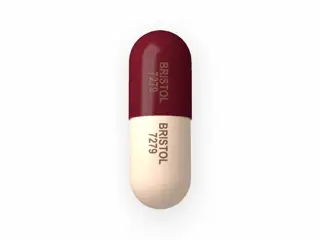Antibacterial



Effective antibacterial products to help prevent infections and promote healing. Shop trusted solutions designed to keep you and your family safe and healthy.
Antibacterial medications are essential for treating infections caused by bacteria. They work by killing bacteria or preventing their growth. This category includes a range of drugs with different modes of action and spectrum of activity. Below is a review of some popular antibacterial medications available in online pharmacies.
Aralen (chloroquine) is primarily known as an antimalarial drug but also has antibacterial properties. It works by interfering with the growth of certain bacteria. Aralen is sometimes used in chronic infections and autoimmune diseases due to its immunomodulatory effects. Its use as a direct antibacterial agent is limited but notable in specific cases.
Asacol contains mesalamine and is used mainly for inflammatory bowel diseases like ulcerative colitis rather than bacterial infections. However, it helps reduce inflammation that can be linked with bacterial imbalance. Asacol supports gut health but is not a typical antibacterial.
Bactrim is a combination of sulfamethoxazole and trimethoprim. It has a broad spectrum of activity against bacterial infections. Bactrim works by inhibiting bacterial folate synthesis, which is essential for bacterial growth. It treats urinary tract infections, respiratory infections, gastrointestinal infections, and some types of pneumonia. Bactrim is widely used due to its effectiveness and relatively low cost. However, allergic reactions and resistance are concerns to watch for.
Ceftin contains cefuroxime, a cephalosporin antibiotic. It treats respiratory tract infections, skin infections, and urinary tract infections. Ceftin works by disrupting bacterial cell wall synthesis, leading to bacterial death. It is effective against many gram-positive and gram-negative bacteria. Ceftin is often favored for patients allergic to penicillin, though cross-reactivity exists. Side effects may include gastrointestinal upset and allergic reactions.
Furadantin, or nitrofurantoin, is commonly used for urinary tract infections. It acts by damaging bacterial DNA. It concentrates well in the urine, making it very effective for bladder infections. Furadantin is not suitable for infections outside the urinary tract due to limited tissue penetration. It is generally well-tolerated but may cause nausea or pulmonary side effects with prolonged use.
Rulide contains roxithromycin, a macrolide antibiotic. It is effective against respiratory and soft tissue infections. The drug inhibits bacterial protein synthesis. Rulide is preferred for patients unable to use penicillin-class antibiotics. It has a good safety profile, but gastrointestinal discomfort and potential drug interactions should be considered.
Suprax contains cefixime, a third-generation cephalosporin. It treats infections like otitis media, pharyngitis, and gonorrhea. Suprax works similarly to Ceftin by inhibiting cell wall synthesis. It offers good oral bioavailability and once-daily dosing, which enhances patient compliance. Side effects are usually mild but can include diarrhea and allergic reactions.
Tinidazole is an antibiotic with antiprotozoal action. It is effective against anaerobic bacteria and protozoa. Tinidazole is used to treat infections such as amoebiasis, giardiasis, and bacterial vaginosis. It works by damaging DNA in sensitive organisms. Tinidazole has a short course of therapy and is well tolerated, though nausea and metallic taste are common side effects.
Trimox is a form of amoxicillin, a penicillin antibiotic. It treats a wide range of bacterial infections. Trimox works by inhibiting bacterial cell wall synthesis, leading to cell death. It is commonly used for respiratory, ear, nose, throat, and urinary infections. Being effective and well-tolerated, it is widely prescribed. Resistance is a growing concern, so proper use is critical.
Vibramycin contains doxycycline. It is a broad-spectrum tetracycline antibiotic. Vibramycin inhibits bacterial protein synthesis. It treats respiratory infections, acne, Lyme disease, and others. Its long half-life allows for once or twice daily dosing. Side effects may include photosensitivity and gastrointestinal upset. Vibramycin is valuable for patients with penicillin allergy.
All these medications vary in their antibacterial spectrum and site of action. Choosing the right antibacterial depends on the infection type, severity, patient’s medical history, and antibiotic susceptibility of the bacteria involved. It is important to follow the prescribed dosage and duration to reduce resistance risk. Side effects and drug interactions also require attention.
In summary, Bactrim, Ceftin, Trimox, and Vibramycin constitute some of the most versatile antibacterials for common infections. Nitrofuran derivatives like Furadantin are ideal for urinary infections. Macrolides like Rulide offer alternatives for respiratory infections. Newer cephalosporins such as Suprax provide broad coverage with convenient dosing. Tinidazole serves specialized roles against protozoal and anaerobic infections. Aralen and Asacol have niche uses beyond direct antibacterial therapy.
Consult a healthcare professional before starting any antibiotic. Proper diagnosis and culture testing where possible help target therapy efficiently. Misuse of antibacterials can lead to resistance, treatment failure, and side effects. Online pharmacies provide access to these medications, ensuring availability, but responsible usage is key to successful treatment and limiting antibiotic resistance.






